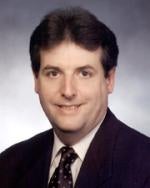Prometheus
The United States Patent and Trademark Office (USPTO) issued preliminary guidelines to examiners in the wake of the recent Supreme Court decision in Mayo Collaborative Services v. Prometheus Laboratories, Inc. According to the preliminary guidelines, applications should be examined for compliance with 35 U.S.C. § 101 using the existing Interim Bilski Guidance issued July 27, 2010 (see IP Update, Vol. 13, No. 8), factoring in the additional considerations below.
To be patent-eligible, a claim that includes an exception to patent eligibility (e.g., law of nature, natural phenomenon or abstract idea) must also recite other elements so that the claimed product or process will amount to significantly more than the ineligible law of nature, natural phenomenon or abstract idea. Under the Prometheus decision, the threshold of “significantly more” is not met by recitation of conventional steps. According to the new USPTO guidelines, if a claim is directed to one of the above exceptions and does not meet the Prometheus eligibility requirements, the examiner should reject the claim under § 101 as being directed to non-statutory subject matter. If a claim is rejected under § 101 on the basis that it is drawn to an exception, the applicant will have an opportunity to explain why the claim is not drawn solely to the exception.
The USPTO is continuing to develop further detailed guidance on patent subject-matter eligibility.
"After Final" Pilot Program
The USPTO "After Final" Pilot Program recently instituted a pilot program for examination protocols after final responses. The duration of the pilot program is limited to the third quarter of the current fiscal year (March to June) but may be extended. Under the After Final Consideration Pilot, examiners should review responses under 37 C.F.R. § 1.116(b) and, using their professional judgment, decide whether the nature and extent of the amendments or arguments presented can be fully considered within the limited amount of time authorized by the pilot program. If not, examiners should treat the response according to current practice. An examiner’s participation in the pilot program is optional.
In accordance with the pilot guidelines (subject to limitations) if an examiner determines a response can be fully considered within three hours for plant and utility applications or one hour for design applications, the examiner will be entitled to take that amount of (non-examining) time regardless of whether the consideration of the amendment ultimately results in allowance of the application.
Under the pilot program guidelines, a response after final rejection should be entered after a complete review in the following situations:
-
The amendment places the application in condition for allowance by canceling claims or complying with formal requirement(s) in response to objection(s) in the final office action.
-
The amendment places the application in condition for allowance by rewriting objected-to claims in independent form.
-
The amendment places the application in condition for allowance by incorporating limitations from objected-to claims into independent claims, if the new claim can be determined to be allowable with only a limited amount of further consideration or search.
-
The amendment can be determined to place the application in condition for allowance with only a limited amount of further search or consideration.
-
The amendment can be determined to place the application in condition for allowance by adding new limitation(s) which require only a limited amount of further consideration or search.
-
The response comprises a perfected 37 C.F.R. § 1.131 or 37 C.F.R. § 1.132 affidavit or declaration (i.e., a new declaration that corrects formal defects noted in a prior affidavit or declaration) which can be determined to place the application in condition for allowance with only a limited amount of further search or consideration.
In situations 1 and 2, no extra (non-examination) time is authorized since such amendments would, according to current practice, normally be entered. In those instances in which an interview is conducted as a result of consideration of an after final response, additional time is authorized by the pilot program: up to two hours for plant and utility applications with an additional one hour for the actual interview.



 />i
/>i


